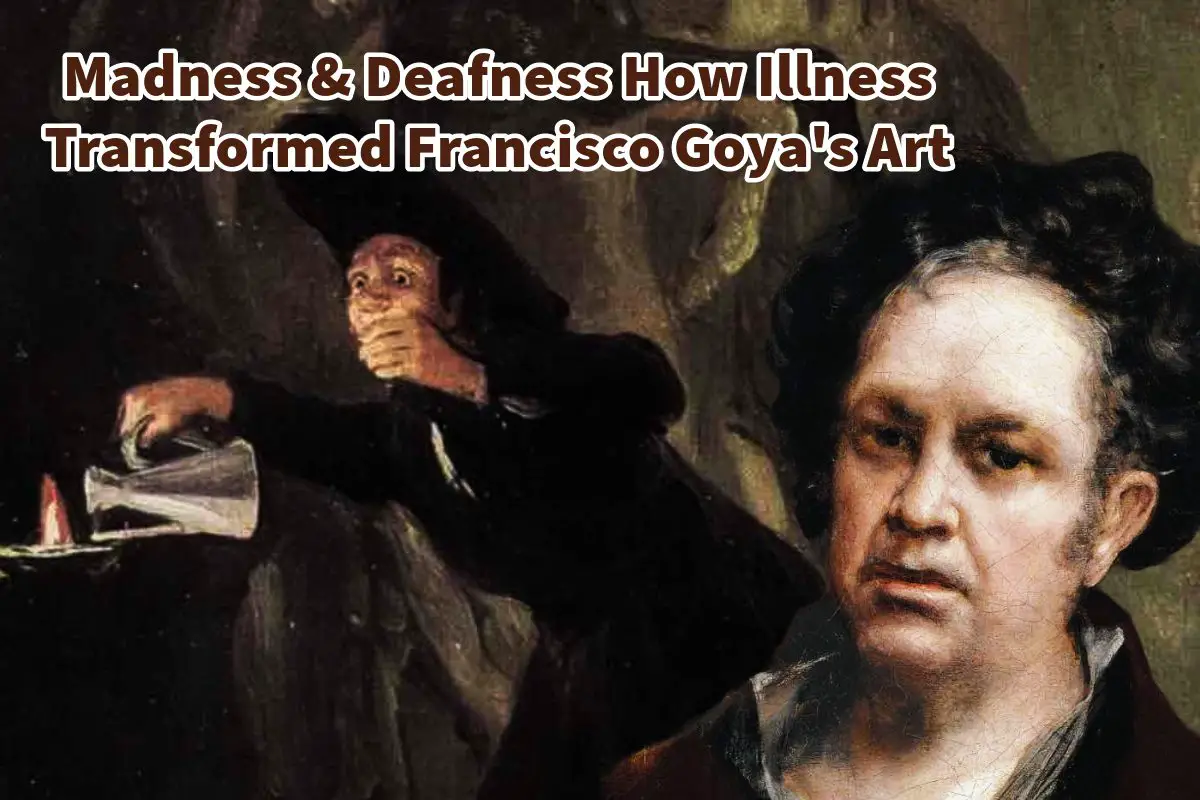Francisco Goya is one of the most eminent Spanish artists in history, and many today regard him as one of the greatest artists of all time. His profound impact on the art world continues to inspire countless artists.
At age 46, Goya encountered a health crisis, which many speculate was a cerebral stroke. This ailment not only rendered him deaf but also seems to have altered his artistic perception. As a result, many felt that his subsequent artworks delved into the realms of the bizarre and the insane.
Table of Contents
- From Light To Shadows: How An Illness Transformed Goya’s Artistic Vision
- Goya’s Interpretation Of Madness And Insanity
- Goya’s Enigma: The Darkness Of The Black Paintings
- Frequently Asked Questions
- Related Questions
From Light To Shadows: How An Illness Transformed Goya’s Artistic Vision
Francisco Goya, one of Spain’s most iconic artists, underwent a transformative period that radically shifted the nature and subject of his creations. The root of this profound transformation was a debilitating illness that struck in 1792 when he was just 46 years old. Widely believed to be a cerebral stroke, this ailment left Goya permanently deaf and forever altered his world perception.
Many feel that partly his madness made him a great artist. Aristotle once said:
“No great mind has ever existed without a touch of madness.”
Aristotle
When looking at Goya’s art, especially his post-illness works, one can’t help but wonder if this touch of madness pushed him to create such evocative, dark, and compelling pieces. In a sense, the incapacitating experience might have uncaged the genius within him and led him to become the artist we love and admire today.
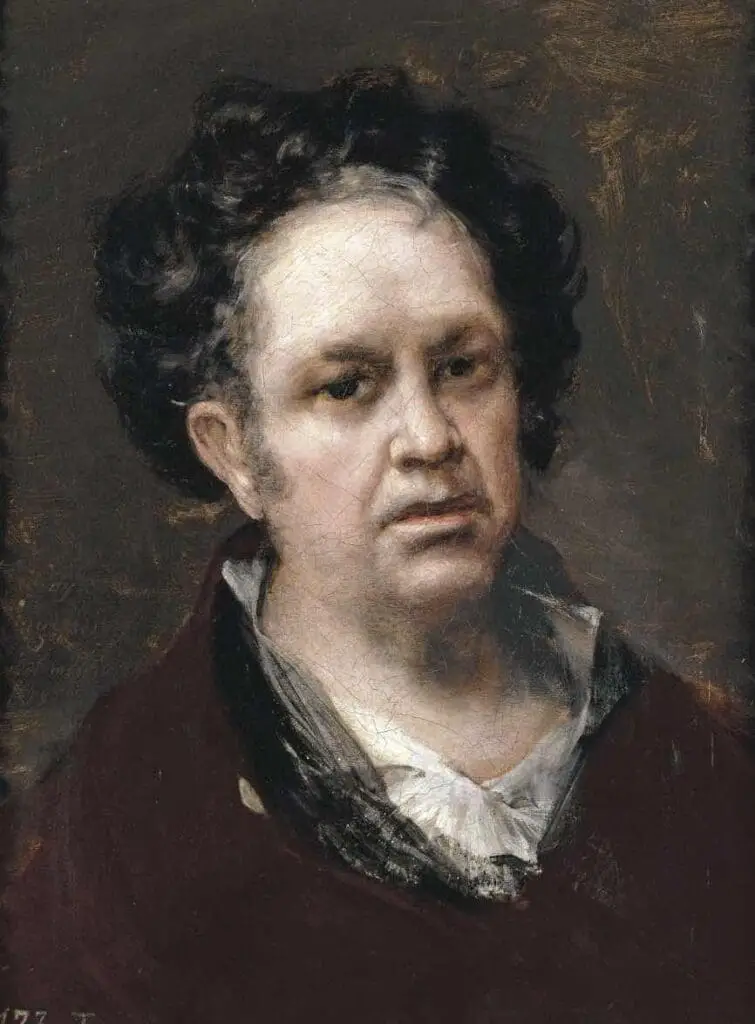
Goya’s Art Before His Illness
Before his illness, Goya’s artwork was primarily centered around Spain’s elite and the royals. He painted beautiful portraits and whimsical tapestries that were celebrated for their exquisite detail and elegance.
But the deafening silence post his affliction seemed to change his artistic focus. The noise from the outside world may have been muted, but the internal cacophony of thoughts and emotions intensified.
Goya’s Art Post – Illness
We know that Francisco Goya’s art changed after his illness. I would imagine an illness like that would change everyone in some way.
Goya’s art post-illness delved into the realms of the obscure, the insane, and the disturbing. His paintings showcased the absurdities and horrors of human behavior, from the bizarre and comical to the deeply unsettling.
Scenes from asylums, illustrations of cannibalism, humans dominated by ominous monsters, and depictions of lunatics – all bore testament to a hauntingly unparalleled vision.
Goya’s Interpretation Of Madness And Insanity
A closer inspection of Goya’s works reveals that his interpretation of ‘madness’ is multi-faceted. Terms like ‘loco’ or ‘locura’ in the titles, which translate to ‘madman’ or ‘madness,’ aren’t merely indicative of clinical insanity.
They represent a spectrum, from the comically eccentric to the profoundly disturbed. This duality is reminiscent of the dichotomy that life often presents: the fine line between genius and madness, order and chaos, light and shadow.
In his later years, particularly during his exile in Bordeaux between 1824-1828, Goya’s obsession with madness reached its zenith.
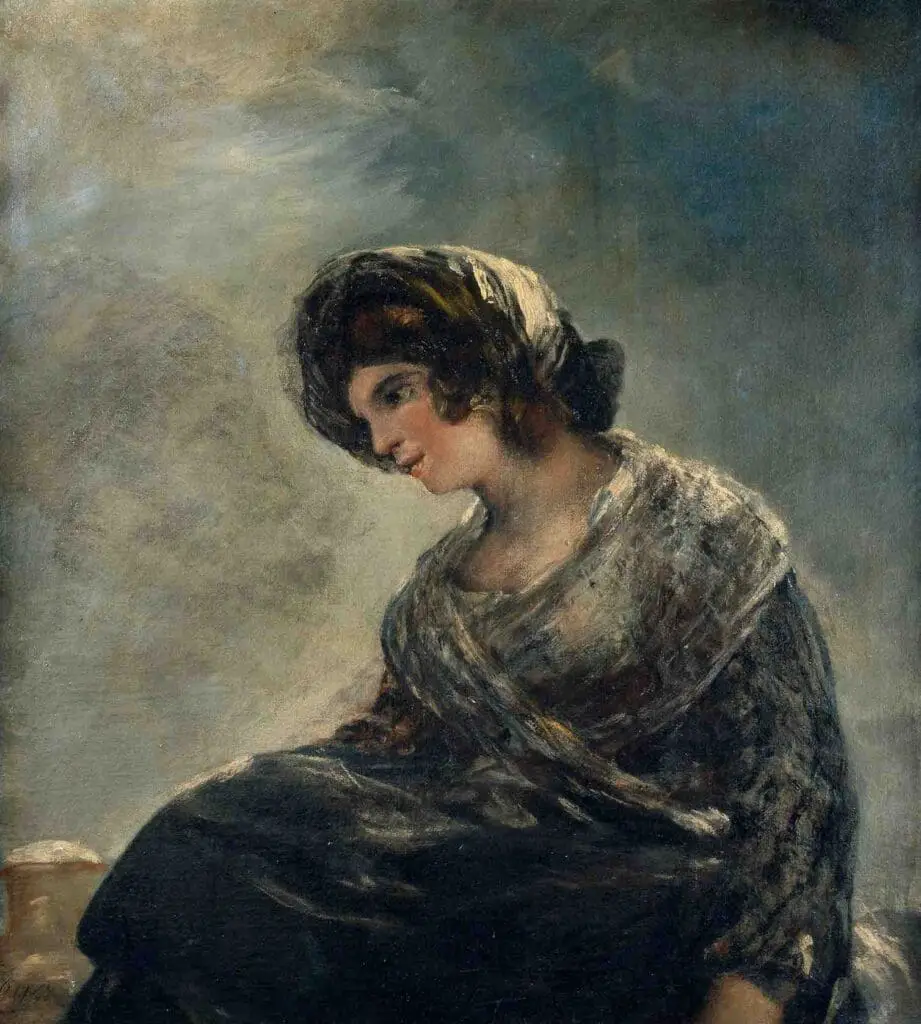
This period saw him produce various drawings centered around lunatics, further underscoring his interest in the blurred boundaries of human sanity.
Goya’s Shows Us Our Experiences Can Affect Us All
Goya’s shift from the light, pretty visuals of royal Spain to the intense, disturbing images of the human psyche is a testament to the profound impact experiences can have on an artist’s soul. His works are a powerful reminder of the thin veil separating sanity from insanity and the transformative power of personal trials.
In essence, Goya’s journey from the vibrant courts of Spain to the deep recesses of his mind showcases the resilience and adaptability of the human spirit. It is a compelling narrative about finding one’s voice amidst life’s tumults and translating that voice into timeless art.
Goya’s Enigma: The Darkness Of The Black Paintings
The eminent Spanish painter Francisco Goya is an enigma wrapped in layers of creativity, madness, and genius. Weaving through Romanticism, hints of Surrealism, and the dark corridors of his psyche,
Goya’s artistic journey spans the entirety of the 19th century. This journey seamlessly connected the traditional techniques of the old masters with the burgeoning brilliance of modernists. Yet, among his diverse repertoire, Goya’s ‘Black Paintings’ elicit a mixture of awe, fear, and intense curiosity.
The ‘Black Paintings’ are a haunting and profoundly emotional series.
Works such as “The Bewitched Man,” “A Pilgrimage to San Isidro,” “The Three Fates (Atropos),” “The Drowning Dog,” and the particularly chilling “Saturn Devouring His Son” (1820-23) provide us with glimpses into a mind that seems to be grappling with profound disturbances, both internal and external.
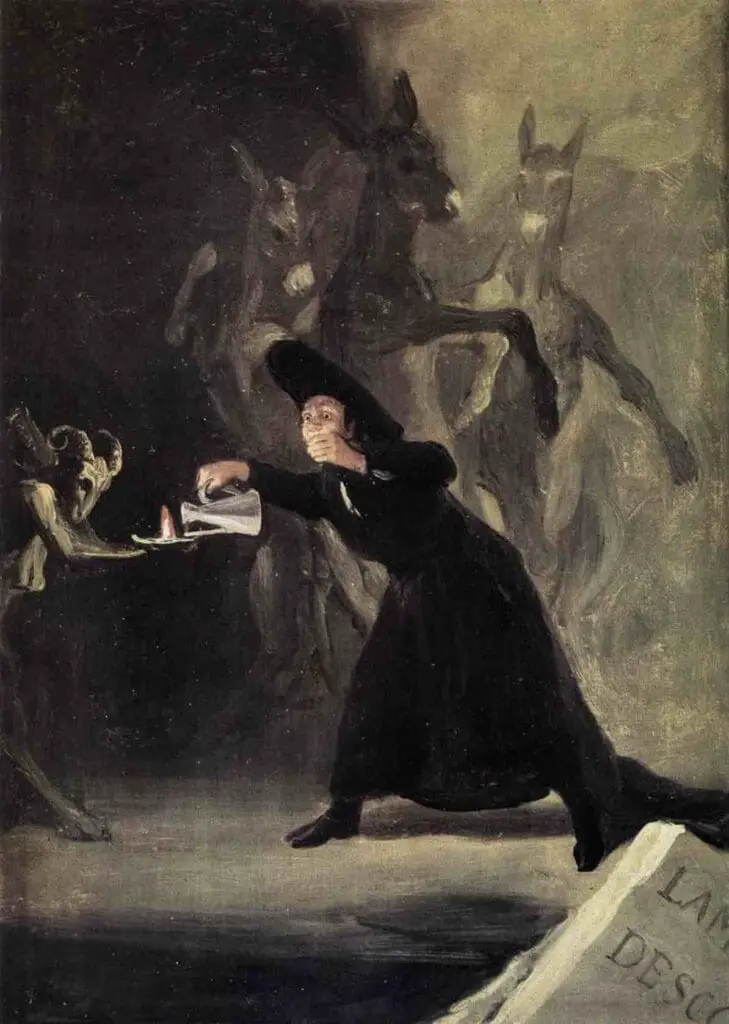

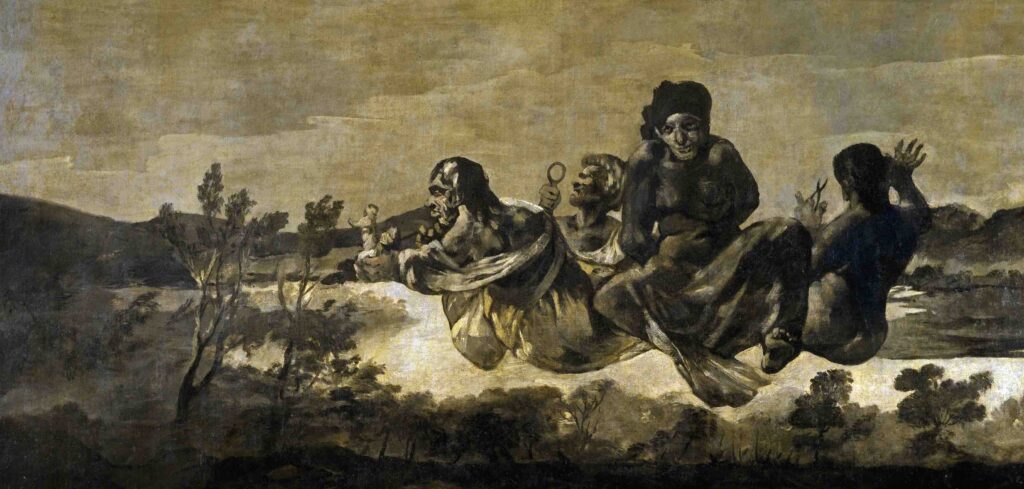

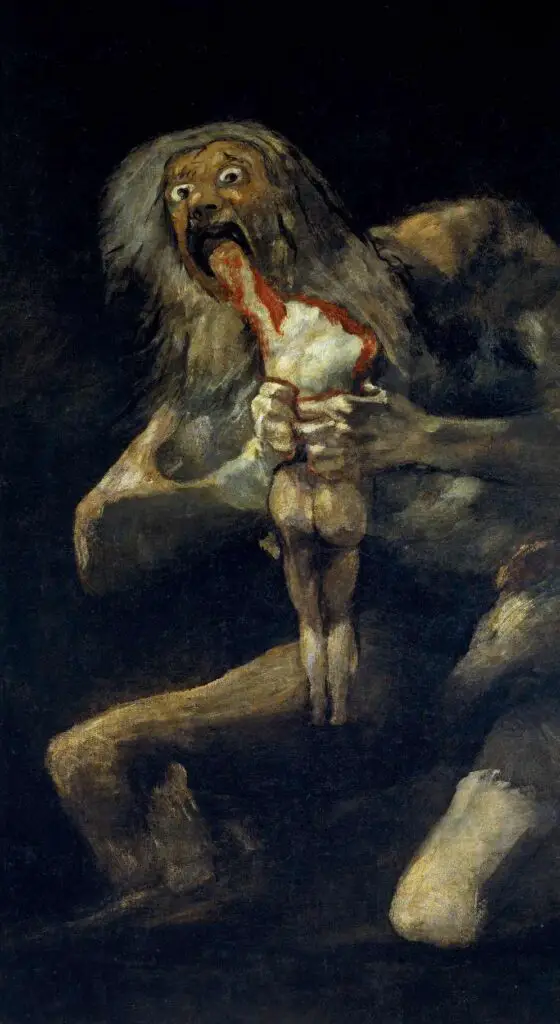
Historians and art connoisseurs have long postulated that these paintings mirrored Goya’s deteriorating mental health. The artist had been enveloped in the profound silence of deafness for several decades by this point.
The solitude was only compounded by his advancing age and his choice to seclude himself in a remote farmhouse in Madrid—the Quinta del Sordo or ‘House of the Deaf One.’
These artworks, tinged with almost palpable darkness, were completed just years before Goya’s death. Intriguingly, they remained hidden from the world, like a shadowy secret.
Goya never showcased these paintings during his lifetime. He vacated the Quinta del Sordo and relocated to France during the twilight years of his life, leaving behind a residence echoing with unspeakable horror and mystery.
The Black Paintings were discovered posthumously, and their unveiling added another layer of complexity to the already intricate tapestry of Goya’s life and work.
These masterpieces stand as a profound testament to an artist’s unmatched prowess in capturing the depth of emotion and a stormy psyche on canvas—evoking the delicate balance between brilliance and insanity. Moreover, Goya’s art suggests that he harbored unsettling visions he felt compelled to depict, if not for his contemporaries to witness, then for future generations to ponder upon.
Listen To Our Podcast About Discovering Goya’s Madness & Deafness: How His Illness Transformed His Art Below or by clicking here.

Anita Louise Art is dedicated to art education, great artists, and inspiring others to find and create their art. We love art that uplifts and aspires. #ArtToMakeYouSmile! #ArtToMakeYouHappy!
If you want to see any of my art, you can find out more by clicking here. If you are interested in what inspires me and my paintings, you can discover more by clicking here.
We have a free newsletter and would love you to be part of our community; you can subscribe to the newsletter by clicking here. If you have any questions, I would be happy to talk to you. You can reach me, Anita, by clicking here.
Subscribe to our Anita Louise Art YouTube Channel filled with great videos and information by clicking here.
Join us for our podcast “5 Minutes With Art.” Spend just 5 minutes a week with us to discover and learn about great art and artists. You can find out more about our podcast by clicking here.
Frequently Asked Questions
What was the nature of Francisco Goya’s health crisis at the age of 46?
Francisco Goya experienced a health crisis at 46, believed by many to be a cerebral stroke. This event had significant repercussions on his life and art.
How did Goya’s health crisis impact his senses?
The health crisis left Goya deaf, profoundly affecting his sensory perception. This sensory deprivation became a transformative force in his artistic expression.
Did Goya’s deafness influence the themes of his artworks?
Yes, Goya’s deafness is thought to have influenced the themes of his artworks. Many of his later pieces are considered darker and delve into the realms of madness and the bizarre.
What are some notable characteristics of Goya’s art after his health crisis?
After his health crisis, Goya’s art exhibited a shift towards darker themes, distorted figures, and a more profound exploration of the human psyche.
Are there specific artworks that reflect Goya’s altered artistic perception?
Works like “Saturn Devouring His Son” and “The Witches’ Sabbath” are often cited as examples of Goya’s altered artistic perception post his health crisis.
How did the art community react to Goya’s change in style?
The shift in Goya’s style sparked mixed reactions. Some praised his bold exploration of darker themes, while others were unsettled by the intensity and darkness of his later works.
Did Goya’s art during this period contribute to any art movements or styles?
Goya’s later works are considered precursors to Romanticism and Expressionism due to their emotional intensity, exploration of the human psyche, and departure from traditional norms.
Did Goya use his art to convey his personal struggles and experiences?
Many art historians believe that Goya used his artworks as a medium to express his personal struggles, including the challenges of living with deafness and the psychological impact of his health crisis.
How did Goya’s perception of the world change after his health crisis?
Goya’s altered sensory perception influenced his worldview, leading him to explore the darker aspects of human nature and society in his art.
How does Goya’s later art legacy continue to influence contemporary artists?
Goya’s later works continue to inspire contemporary artists, particularly those interested in exploring the intersection of art and mental health, as well as the unconventional and expressive use of symbolism.
Related Questions
Similarities Of Expressionism And Impressionism Art And Their Differences
Impressionism and Expressionism art movements started in Europe, but the Impressionism movement started before the Expression art movement. Each movement has different looks of art, which are distinguishable. Even though they are both different art movements, there are still some similarities.
By clicking here, you can learn more by reading Similarities Of Expressionism And Impressionism Art And Their Differences.
What Are The Main Characteristics Of Minimalism Art?
Minimalism art started in New York City in the 1960s. The minimalist artist would use limit their use of lines, shapes, and colors in their art. The artwork had no trace of the artist’s emotions in the art. Minimalism art is considered an extreme form of abstract art. The most important geometric shapes in minimalism art are the square and rectangle.
You can discover more by reading What Are The Main Characteristics Of Minimalism Art? by clicking here.
What Are The Characteristics Of The Arts And Crafts Movement?
The Arts and Craft Movement started in Britain and swept Europe and the United States. The movement started to become both popular and very influential in the late 19th century and changed how many artists worldwide viewed their art. It also changed how artists saw the design of not just their artwork but also buildings, fabrics, wallpaper, parks, cities, and objects in their homes and offices.
You can learn more by reading What Are The Characteristics Of The Arts And Crafts Movement? by clicking here.

